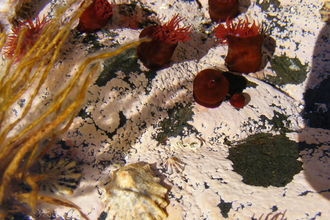
Edible Periwinkle ©Alex Mustard/2020VISION
Edible periwinkle
Edible periwinkles are a common sight when rockpooling and can be found in huge numbers on the shore.
Scientific name
Littorina littoreaWhen to see
January to DecemberSpecies information
Category
Statistics
Height: 3-5cmConservation status
Common




